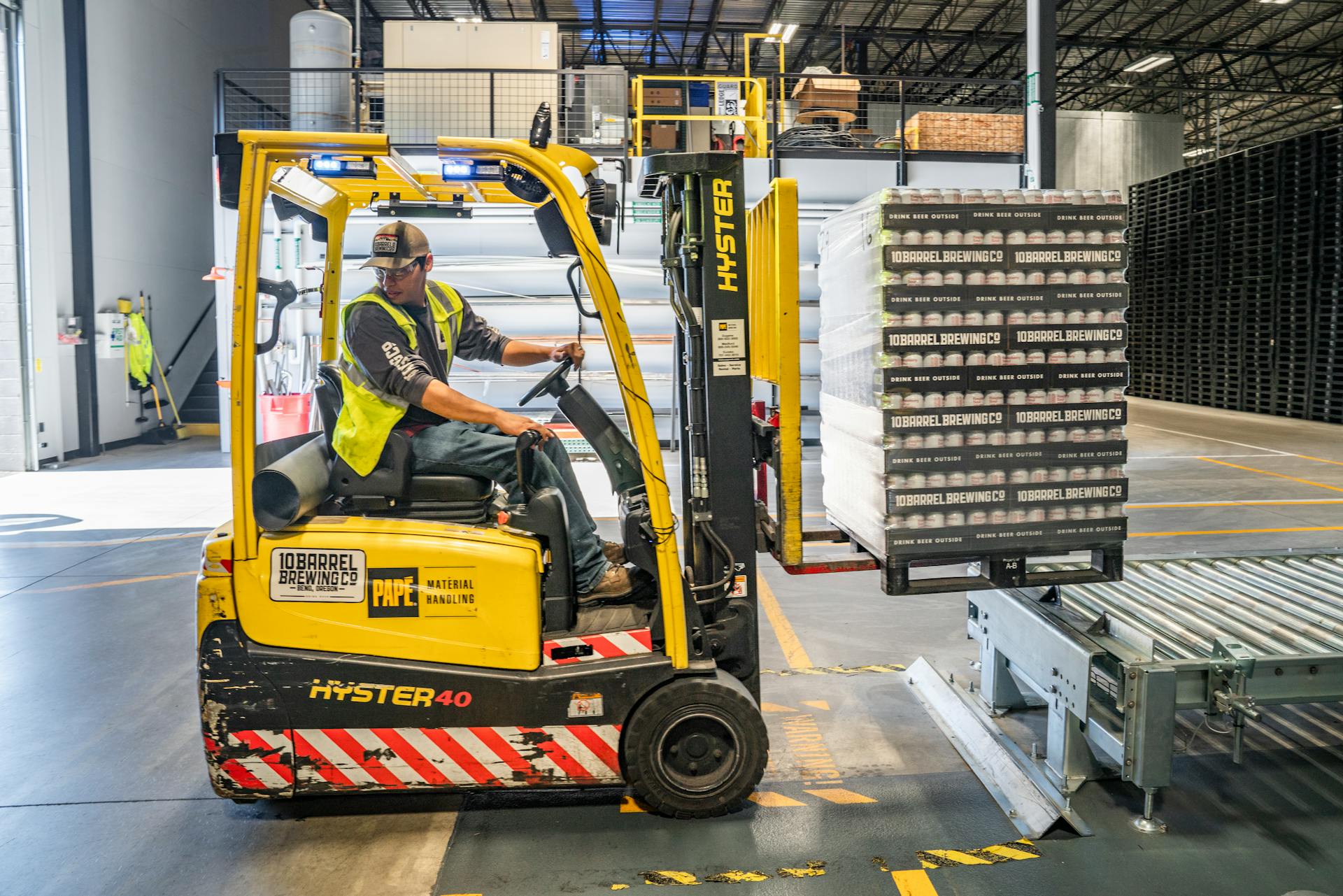Are you struggling to keep your warehouse organized and efficient? You’re not alone. Warehouse organization is crucial for businesses of all sizes, as it can directly impact productivity, customer satisfaction, and bottom-line profits. But with the constant influx of inventory and orders, it’s easy for things to become chaotic in a warehouse setting. Fortunately, there are simple yet effective tips that can help you stay on top of your warehouse organization game.
In this blog post, we’ll discuss essential tips for organizing your warehouse that will not only improve efficiency but also make your work environment a safer and more pleasant place to be. Let’s get to the list.
CONTENTS
Consider Pallet Racking
One of the most effective ways to maximize space and improve organization in a warehouse is by using pallet racking systems. These are shelving units designed specifically for storing pallets, which can hold large quantities of goods and materials. You can find racking and storage for warehouses of all sizes and industries, making it a versatile solution for any business. Pallet racking helps keep your inventory organized and easily accessible, as it allows for efficient use of vertical space.
Additionally, you can customize pallet racking to fit your specific storage needs, such as selective pallet racking for fast-moving products or drive-in racking for bulk storage. By incorporating pallet racking into your warehouse layout, you can greatly improve efficiency and save valuable floor space.
Label Everything
Labeling is a simple yet crucial step in organizing a warehouse. It not only helps employees locate items quickly but also maintains consistency and accuracy in inventory management. Consider using a color-coded system to easily identify different product categories or zones within the warehouse. You can also use barcodes or QR codes for more precise tracking and inventory control.
Furthermore, it’s important to have a standardized labeling system that is easy to understand and maintain. Regularly check and update labels to ensure accuracy and avoid confusion. This may seem like a small detail, but it can make a significant difference in overall warehouse organization and efficiency.
Utilize Vertical Space
Don’t overlook the potential of vertical space in your warehouse. By using tall shelving units or installing mezzanine levels, you can greatly increase storage capacity without taking up valuable floor space. Vertical storage is particularly useful for storing lightweight or smaller items that can be stacked and retrieved using ladders or forklifts.
However, it’s essential to ensure that the shelving units are properly secured and have weight limits clearly marked to avoid any safety hazards. With proper utilization of vertical space, you can optimize your warehouse layout and make the most of every inch.
Implement a First In, First Out (FIFO) System
For warehouses that deal with perishable or time-sensitive products, implementing a FIFO system is crucial. This method ensures that older products are used or sold first before newer ones, preventing spoilage and reducing waste. It also helps maintain product quality and rotation, as well as avoiding expired or outdated inventory. To effectively use a FIFO system, it’s important to properly label and track the date of receipt for each product.
Additionally, regularly check and restock products in their designated areas to maintain the flow of goods. By implementing a FIFO system, you can improve efficiency and reduce costs in your warehouse operations.
Invest in Inventory Management Software
With the constant influx of inventory and orders, managing everything manually can be a daunting and time-consuming task. Investing in inventory management software can greatly improve organization and efficiency in your warehouse. These systems allow for real-time tracking of inventory levels, location, and movements, helping you stay on top of stock levels at all times. They also offer features such as automated restocking alerts and batch tracking for streamlined inventory control.
Furthermore, with the ability to generate reports and analyze data, you can make more informed decisions and optimize your warehouse operations. While there is an initial cost involved, the long-term benefits of using inventory management software make it a worthwhile investment for any business.
Regularly Conduct Audits
Last but not least, conducting regular audits is essential for maintaining a well-organized warehouse. This involves physically counting and checking inventory levels against recorded data to ensure accuracy and identify any discrepancies. Audits also allow you to assess the effectiveness of your current organization methods and make necessary adjustments.
It’s important to have a schedule for audits, whether it be weekly, monthly, or quarterly, and involve all relevant team members. This not only keeps inventory in check but also promotes accountability and teamwork among employees. By regularly conducting audits, you can ensure efficient operations and avoid costly errors in your warehouse.
Maintaining an organized warehouse is vital for any business looking to improve productivity and efficiency. By implementing these essential tips, such as pallet racking, labeling, utilizing vertical space, using a FIFO system, investing in inventory management software, and conducting regular audits, you can greatly improve your warehouse organization. Remember to regularly review and adapt your methods to meet the changing needs of your business, and your warehouse will continue to run smoothly and effectively.

Hey, I’m Jeremy Clifford. I hold a bachelor’s degree in information systems, and I’m a certified network specialist. I worked for several internet providers in LA, San Francisco, Sacramento, and Seattle over the past 21 years.
I worked as a customer service operator, field technician, network engineer, and network specialist. During my career in networking, I’ve come across numerous modems, gateways, routers, and other networking hardware. I’ve installed network equipment, fixed it, designed and administrated networks, etc.
Networking is my passion, and I’m eager to share everything I know with you. On this website, you can read my modem and router reviews, as well as various how-to guides designed to help you solve your network problems. I want to liberate you from the fear that most users feel when they have to deal with modem and router settings.
My favorite free-time activities are gaming, movie-watching, and cooking. I also enjoy fishing, although I’m not good at it. What I’m good at is annoying David when we are fishing together. Apparently, you’re not supposed to talk or laugh while fishing – it scares the fishes.

